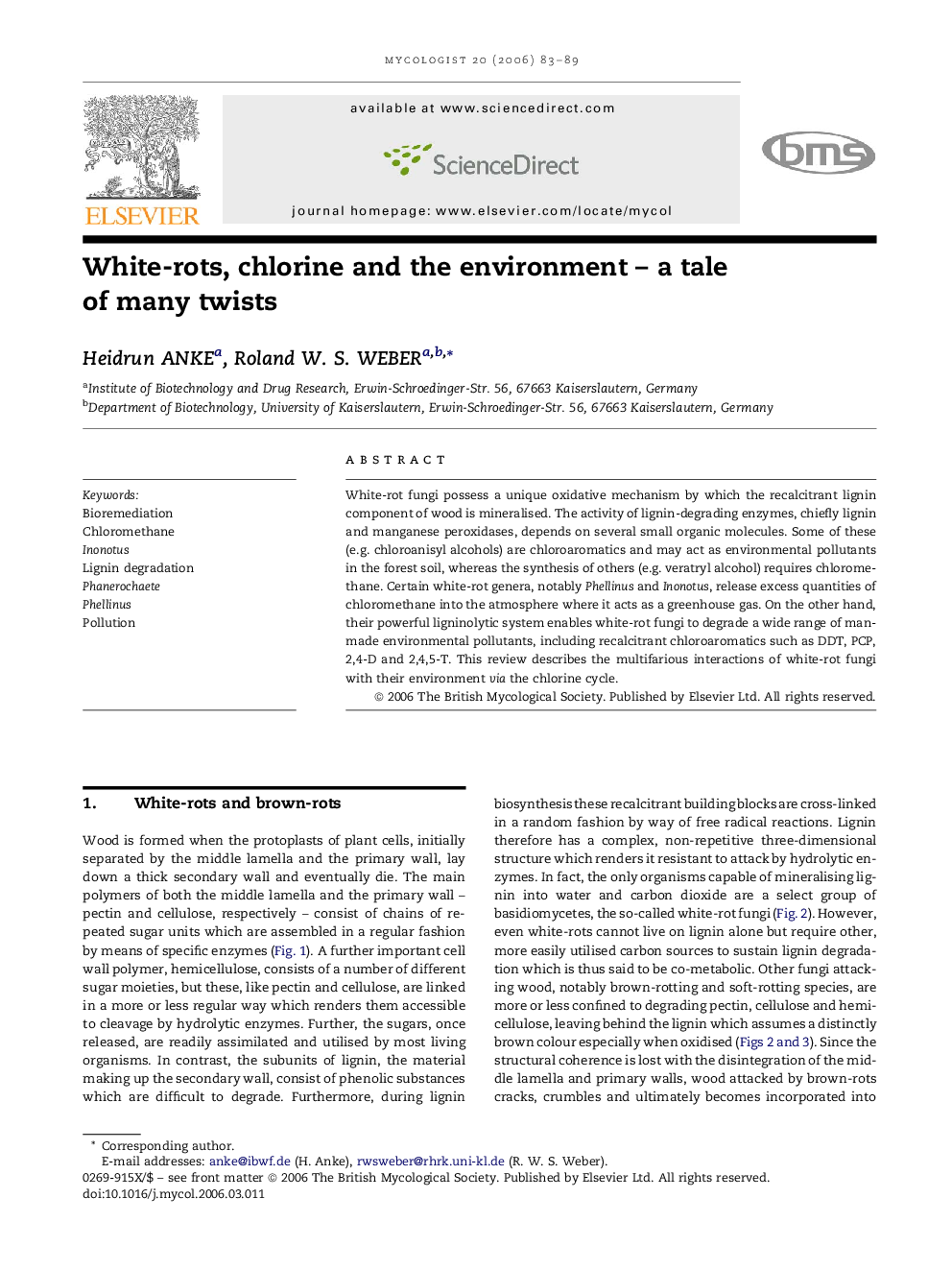| Article ID | Journal | Published Year | Pages | File Type |
|---|---|---|---|---|
| 4358291 | Mycologist | 2006 | 7 Pages |
White-rot fungi possess a unique oxidative mechanism by which the recalcitrant lignin component of wood is mineralised. The activity of lignin-degrading enzymes, chiefly lignin and manganese peroxidases, depends on several small organic molecules. Some of these (e.g. chloroanisyl alcohols) are chloroaromatics and may act as environmental pollutants in the forest soil, whereas the synthesis of others (e.g. veratryl alcohol) requires chloromethane. Certain white-rot genera, notably Phellinus and Inonotus, release excess quantities of chloromethane into the atmosphere where it acts as a greenhouse gas. On the other hand, their powerful ligninolytic system enables white-rot fungi to degrade a wide range of man-made environmental pollutants, including recalcitrant chloroaromatics such as DDT, PCP, 2,4-D and 2,4,5-T. This review describes the multifarious interactions of white-rot fungi with their environment via the chlorine cycle.
